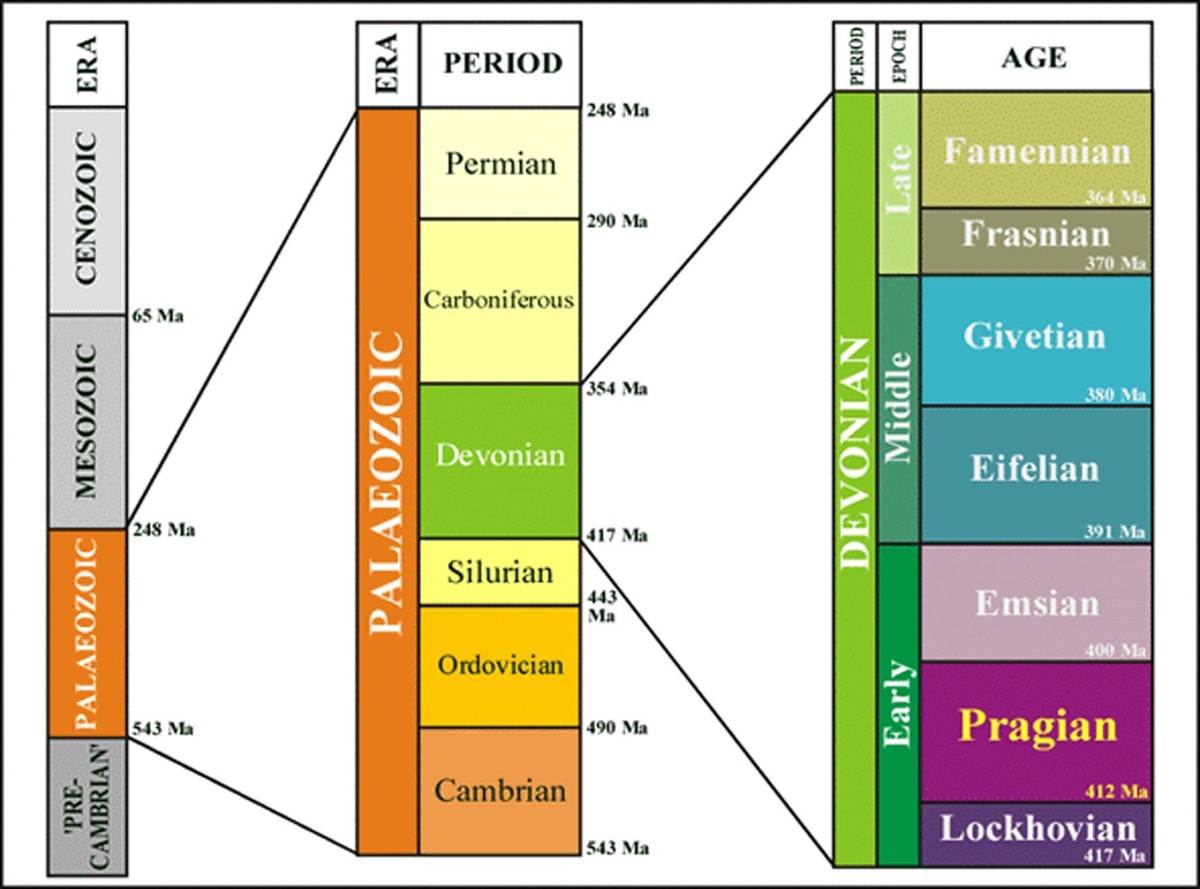The age of the Rhynie chert and it's associated sediments has been calculated by combining two analytical methods: absolute dating and biostratigraphy.
Absolute dating
Absolute dates for rocks are calculated by examining radioactive isotopes of certain elements in a mineral that take millions of years to 'decay' to a more stable isotope. If the length of time it takes for an isotope to decay to another stable form is known, and also the amount of radioactive isotope that remains in the mineral, then the age of that mineral can be calculated. If the particular mineral has grown at the same time as its host rock formed and remains in situ (eg. in igneous rocks), then the age of the rock will be the same as that of the mineral.
Analysis of the isotopes 40Ar and 39Ar from the cherts have given an age of 396 ~ 8 million years ( Rice et al. 1995 ). Recently the radiometric dating of zircon and titanite minerals within contemporaneous andesitic lavas at Rhynie have further constrained this date. The results of the zircon and titanite dating are currently being compiled by Stephen Parry and other authors, and will be added here after their publication in the scientific literature.
Biostratigraphy
With the Rhynie sediments, the other main criterion for dating (or 'relative dating') has been the use of biostratigraphy , primarily using palynology , which includes the study of fossil spores and pollen. In many sedimentary rocks, particularly those of a continental or freshwater origin, fossil spores can be quite widespread, abundant and may be highly diverse and evolved over time. This makes them ideal zone fossils for biostratigraphy and dating of sedimentary rocks ( for some examples of spores, see the section on the Rhynie flora ).
The Rhynie cherts and particularly its associated muddy sediments have yielded many well preserved fossilised spores. Comparing these spores with spore or palynomorph zone fossils collected from other sedimentary rocks of known age at other localities indicates the Rhynie spores fall in a spore biozone which equates to a time period between approximately 400 and 412 million years ( for details of the Rhynie chert palynology see Wellman 2004 ).
Combining these dates firmly place the Rhynie cherts and sediments as Early Devonian (see the geological timescale below) and more specifically Pragian in age, although at present an earliest Emsian age cannot be entirely ruled out.

